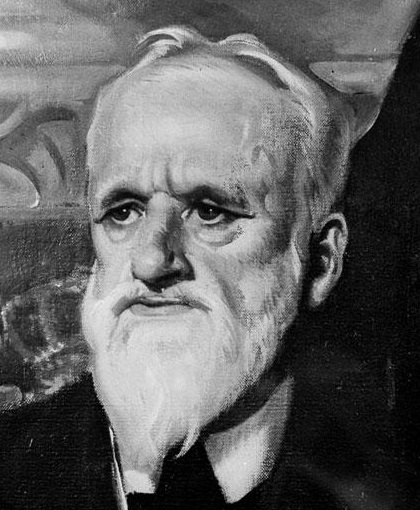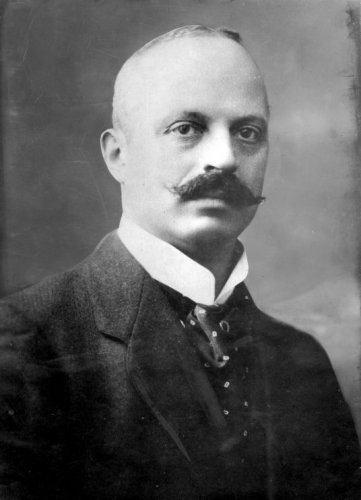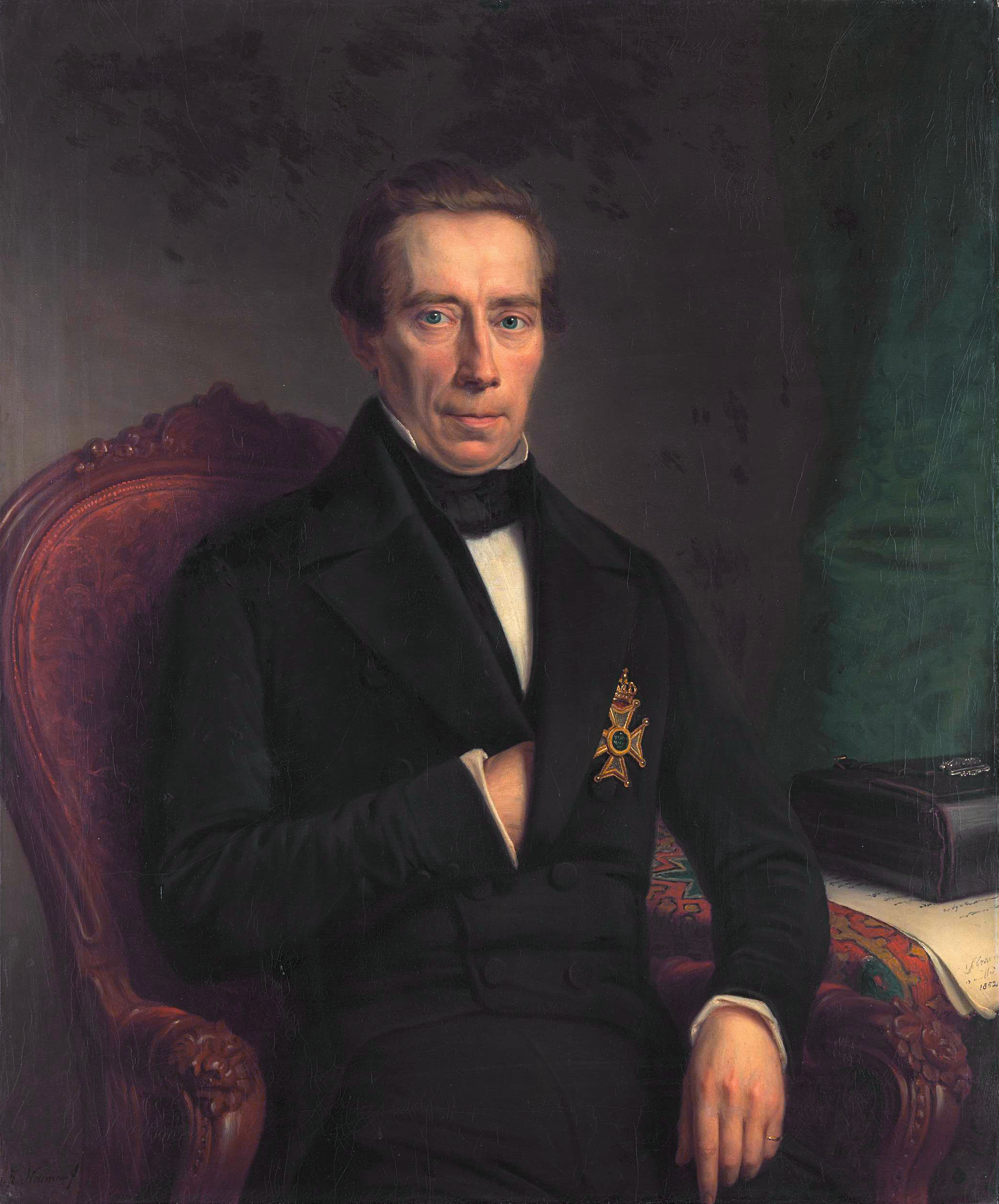|
Cort Van Der Linden Cabinet
The Cort van der Linden cabinet was the cabinet of the Netherlands from 29 August 1913 until 9 September 1918. The cabinet was formed by Independent Liberal Pieter Cort van der Linden after the election of 1913 and received confidence and supply in the House of Representatives from other Independent Liberals and several members of the Free-thinking Democratic League (VDB), Christian Historical Union (CHU) and the Liberal Union (LU) and from 15 December 1917 also the Economic League (EL). The centre cabinet was officially a minority government in the House of Representatives but was also supported by additional members of the Anti-Revolutionary Party (ARP) for a majority. It was the last cabinet with a Liberal Prime Minister until Mark Rutte Mark Rutte (; born 14 February 1967) is a Dutch politician who has served as Prime Minister of the Netherlands since 2010 and Leader of the People's Party for Freedom and Democracy (VVD) since 2006. After a business career working fo ... [...More Info...] [...Related Items...] OR: [Wikipedia] [Google] [Baidu] |
Demissionary Cabinet
A demissionary cabinet ( nl, demissionair kabinet) is a type of caretaker cabinet in the Netherlands. A demissionary cabinet continues the current government after a cabinet has ended. This can either be after completion of the full term, between general elections (when the new House of Representatives is installed) and the formation of a new cabinet, or after a cabinet crisis. In both cases the prime minister hands in the resignation of his cabinet to the Dutch Monarch. The Monarch will not accept full resignation until a new cabinet has been formed. Between the moment in which the prime minister hands in the resignation and the Monarch installs a new cabinet, the cabinet is labelled demissionary. As a demissionary cabinet is considered a continuation of the previous cabinet, it is not counted as a new cabinet (e.g. Balkenende IV did not become Balkenende V when becoming demissionary). By constitutional convention, a demissionary cabinet has fewer powers than a conventiona ... [...More Info...] [...Related Items...] OR: [Wikipedia] [Google] [Baidu] |
First Ruijs De Beerenbrouck Cabinet
The First Ruijs de Beerenbrouck cabinet was the cabinet of the Netherlands from 9 September 1918 until 18 September 1922. The cabinet was formed by the political parties Roman Catholic State Party (RKSP), Anti-Revolutionary Party (ARP) and the Christian Historical Union (CHU) after the election of 1918. The centre-right cabinet was a majority government in the House of Representatives. It was the first of three cabinets of Charles Ruijs de Beerenbrouck, the Leader of the Roman Catholic State Party as Prime Minister A prime minister, premier or chief of cabinet is the head of the cabinet and the leader of the ministers in the executive branch of government, often in a parliamentary or semi-presidential system. Under those systems, a prime minister is not .... Cabinet Members : Resigned. : Served ''ad interim''. References External links ;Official *Kabinet-Ruijs de Beerenbrouck IParlement & Politiek {{DEFAULTSORT:Ruijs de Beerenbrouck cabinet, First Cabinets of ... [...More Info...] [...Related Items...] OR: [Wikipedia] [Google] [Baidu] |
Ministry Of The Interior And Kingdom Relations
The Ministry of the Interior and Kingdom Relations ( nl, link=no, Ministerie van Binnenlandse Zaken en Koninkrijksrelaties; BZK) is the Netherlands' ministry responsible for domestic policy, civil service, public administration, elections, local governments, intelligence, and kingdom relations. The minister of the interior and kingdom relations is a member of the Cabinet of the Netherlands. The ministry was created in 1798 as the Department of Internal Police, to monitor the state of dikes, roads, and waters of the Batavian Republic. It became the Ministry of the Interior in 1876 and had several name changes before adopting its current name in 1998. Hanke Bruins Slot has been its incumbent minister since January 2022. History A precursor of the ministry, the Department for Internal Policy and Supervision on the State of Water Works, was founded in the Batavian Republic in 1798. This department was renamed Ministry of the Interior in 1801, and this name carried through when th ... [...More Info...] [...Related Items...] OR: [Wikipedia] [Google] [Baidu] |
List Of Ministers Of The Interior Of The Netherlands
The Minister of the Interior and List of Ministers of Kingdom Relations of the Netherlands, Kingdom Relations ( nl, Minister van Binnenlandse Zaken en Koninkrijksrelaties) is the head of the Ministry of the Interior and Kingdom Relations and a member of the Cabinet of the Netherlands, Cabinet and the Council of Ministers (Netherlands), Council of Ministers. The incumbent minister is Hanke Bruins Slot of the Christian Democratic Appeal (CDA) party who has been in office since 10 January 2022. Regularly a State Secretary is assigned to the Ministry who is tasked with specific portfolios. The current State Secretary is Alexandra van Huffelen of the Democrats 66 (D66) party who also has been in office since 10 January 2022 and has been assigned the portfolios of Kingdom of the Netherlands, Kingdom Relations, List of municipalities of the Netherlands, Local Provinces of the Netherlands, Government and E-government, Digital Government. Occasionally there is also a Minister without Port ... [...More Info...] [...Related Items...] OR: [Wikipedia] [Google] [Baidu] |
Doctor (title)
Doctor is an academic title that originates from the Latin word of the same spelling and meaning. The word is originally an agentive noun of the Latin verb 'to teach'. It has been used as an academic title in Europe since the 13th century, when the first doctorates were awarded at the University of Bologna and the University of Paris. Having become established in European universities, this usage spread around the world. Contracted "Dr" or "Dr.", it is used as a designation for a person who has obtained a doctorate (commonly a PhD/DPhil). In many parts of the world it is also used by medical practitioners, regardless of whether they hold a doctoral-level degree. Origins The doctorate ( la, doceō, lit=I teach) appeared in medieval Europe as a license to teach ( la, licentia docendi, links=no) at a medieval university. Its roots can be traced to the early church when the term "doctor" referred to the Apostles, church fathers and other Christian authorities who taught a ... [...More Info...] [...Related Items...] OR: [Wikipedia] [Google] [Baidu] |
Ministries Of The Netherlands
The most influential part of the executive of the Government of the Netherlands are the ministries. There are twelve ministries of the Netherlands, all with their own minister. There are also several ministers without portfolio A minister without portfolio is either a government minister with no specific responsibilities or a minister who does not head a particular ministry. The sinecure is particularly common in countries ruled by coalition governments and a cabinet ... and about as many State Secretaries. List {{Government of the Netherlands ... [...More Info...] [...Related Items...] OR: [Wikipedia] [Google] [Baidu] |
Minister (government)
A minister is a politician who heads a ministry, making and implementing decisions on policies in conjunction with the other ministers. In some jurisdictions the head of government is also a minister and is designated the ‘prime minister’, ‘premier’, ‘chief minister’, ‘chancellor’ or other title. In Commonwealth realm jurisdictions which use the Westminster system of government, ministers are usually required to be members of one of the houses of Parliament or legislature, and are usually from the political party that controls a majority in the lower house of the legislature. In other jurisdictions—such as Belgium, Mexico, Netherlands, Philippines, Slovenia, and Nigeria—the holder of a cabinet-level post or other government official is not permitted to be a member of the legislature. Depending on the administrative arrangements in each jurisdiction, ministers are usually heads of a government department and members of the government's ministry, cabinet and p ... [...More Info...] [...Related Items...] OR: [Wikipedia] [Google] [Baidu] |
Mark Rutte
Mark Rutte (; born 14 February 1967) is a Dutch politician who has served as Prime Minister of the Netherlands since 2010 and Leader of the People's Party for Freedom and Democracy (VVD) since 2006. After a business career working for Unilever, Rutte entered politics in 2002 on his appointment as State Secretary for Social Affairs and Employment by Prime Minister Jan Peter Balkenende of the Christian Democratic Appeal (CDA), after a coalition agreement guaranteed the VVD several seats in his cabinet. Rutte was subsequently elected to the House of Representatives at the 2003 election. In 2004, he became State Secretary for Education, Culture and Science in the second Balkenende cabinet. After municipal elections in 2006 saw heavy losses for the VVD, the party's leader, Jozias van Aartsen, announced his resignation. Rutte stood in the subsequent leadership election; he was elected on 31 May, resigning from his cabinet post shortly afterwards. Rutte led the VVD into the 2006 ... [...More Info...] [...Related Items...] OR: [Wikipedia] [Google] [Baidu] |
Prime Minister Of The Netherlands
The prime minister of the Netherlands ( nl, Minister-president van Nederland) is the head of the executive branch of the Government of the Netherlands. Although the monarch is the ''de jure'' head of government, the prime minister ''de facto'' occupies this role as the officeholder chairs the Council of Ministers and coordinates its policy with the rest of the cabinet. The current prime minister has been Mark Rutte since 14 October 2010, whose fourth cabinet was inaugurated on 10 January 2022. History Gradually the prime minister became an official function of government leader, taken by the political leader of the largest party. Since 1845, the role of the first minister is relevant. In that year the Constitution of the Netherlands was amended to make ministers responsible to the States General and no longer responsible to the king, who acted as the leader of cabinet. Until 1901, the position chair of the Council of Ministers officially rotated between ministers. Between 19 ... [...More Info...] [...Related Items...] OR: [Wikipedia] [Google] [Baidu] |
Liberalism In The Netherlands
Liberalism in the Netherlands started as an anti-monarchical effort spearheaded by the Dutch statesman Thorbecke, who almost single-handedly wrote the 1848 Constitution of the Netherlands that turned the country into a constitutional monarchy. In contemporary politics, there are both left and right-wing parties that refer to themselves as "liberal", with the former more often espousing social liberalism and the latter more often espousing liberalism. A common characteristic of these parties that they are nominally irreligious, in contrast to the traditionally dominant and still popular Christian democracy. In the contemporary economic situation, even though the markets for basic needs services like food and clothing are still subject to economic liberalism, this is not the case in housing, in child education, health care and payment services. For example the health care system does not satisfy basic requirements for being a market economy because in the distribution of goods and s ... [...More Info...] [...Related Items...] OR: [Wikipedia] [Google] [Baidu] |
Anti-Revolutionary Party
The Anti-Revolutionary Party ( nl, Anti-Revolutionaire Partij, ARP) was a Protestant conservative and Christian democratic political party in the Netherlands. The party was founded in 1879 by Abraham Kuyper, a neo-Calvinist theologian and minister. In 1980 the party merged with the Catholic People's Party (KVP) and the Christian Historical Union (CHU) to form the Christian Democratic Appeal (CDA). History History before 1879 They anti-revolutionary parliamentary caucus had existed since the 1840s. It represented orthodox tendencies within the Dutch Reformed Church. Under the leadership of Guillaume Groen van Prinsterer the anti-revolutionaries became a real political force, which opposed the liberal tendencies within the Dutch Reformed Church and the liberal tendencies within Dutch politics. Their three values were "God, the Netherlands, and the House of Orange". An important issue was public education, which in the view of the anti-revolutionaries should be Protestant-Ch ... [...More Info...] [...Related Items...] OR: [Wikipedia] [Google] [Baidu] |
Minority Government
A minority government, minority cabinet, minority administration, or a minority parliament is a government and Cabinet (government), cabinet formed in a parliamentary system when a political party or Coalition government, coalition of parties does not have a majority of overall seats in the legislature. It is sworn into office, with or without the formal support of other parties, enabling a government to be formed. Under such a government, legislation can only be passed with the support or consent of enough other members of the legislature to provide a majority, encouraging multi-partisanship. In Bicameralism, bicameral legislatures, the term relates to the situation in the chamber whose confidence is considered most crucial to the continuance in office of the government (generally, the lower house). A minority government tends to be much less stable than a majority government because if they can unite for a purpose, opposing parliamentary members have the numbers to vote against ... [...More Info...] [...Related Items...] OR: [Wikipedia] [Google] [Baidu] |





.jpg)

